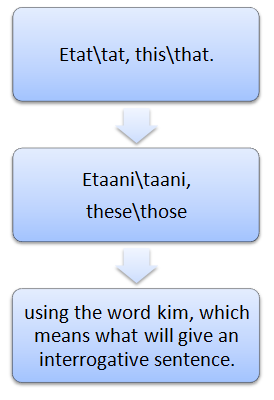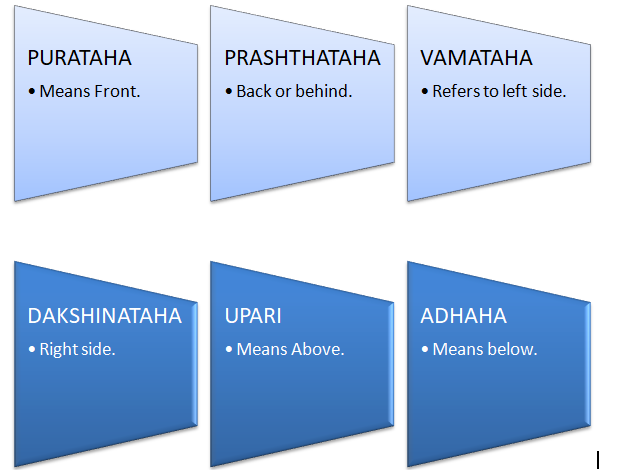It is extremely important for learners to understand that just like verbs, even the Sanskrit pronouns will be understood by translating them into English pronouns. Firstly, let us look at the pronouns in the table given below:
Sanskrit pronoun |
English pronoun |
Context |
| Eshaha, एषः | He | This is used when a person is standing nearby. |
| Saha, सः | He | Refers to when a person is standing far away. |
| Kaha, कः
|
Who is masculine form. | Example, “eshaha kaha?” which means “Who is he?” |
| kaa, का
|
Who in feminine form. | Example, “Esha kaa?” which means “Who is she?” |
| Eshaa, एषा
|
She | This is used when a person (female) is standing nearby. |
| Saa, सा | She. | This is used when the female is standing far away. |
Initially we dealt with pronouns in singular form keeping in mind the gender, now we shall look at pronouns keeping in mind the genger but in plural terms.
Sanskrit pronoun |
English pronoun |
Context |
| Ete एते | They | Used in the masculine context. |
| Etaaha एताः | They | Used in feminine context. |
| Ke के | who | Usually used with masculine ete. |
| Kaha काः | who | Usually used with feminine etaaha |
| Te ते | they | Used in masculine plural |
| Taaha ताः | they | Used in feminine plural. |
Up until now learners have looked at pronouns in context of people, now the pronouns have to be understood with reference to situations or things.
 Next, we come to the simple pronouns of “I”, “we” and “you”
Next, we come to the simple pronouns of “I”, “we” and “you”
There are two words which have to be kept to be kept in mind when it to these three pronouns.
Aham, अहम्: This means I. The plural form of Aham is “Vayam”, which means we.
Bhavan, भवान्: This means you. There is a difference in the masculine and feminine you; bhavan refers to masculine you, whereas bhavati refers to feminine you. Plural forms of Bhavant and bhavanti are bhavantha and bhavantyaha respectively.
As far as the usage of words is concerned, an essential element of our daily lives is the knowledge of directions. Where would we be without directions? There are six words in Sanskrit language which deal with directions. These are purataha पुरतः, vaamataha वामतः, dakshinataha दक्षिणतः, prashthataha पृष्ठतः, adhaha अधः, upari उपरि. ,
It is in this manner that there are various pronouns which are a part of the Sanskrit grammar and all of them together construct a system through which Sanskrit grammar can be more practical.


